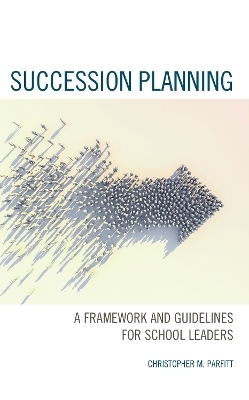
Succession Planning
Rowman & Littlefield (Verlag)
978-1-4758-6092-4 (ISBN)
Succession planning is a concept not well known nor used in education. Businesses, non-profit entities, medical organizations, and the military have used many of the concepts for decades with varying degrees of success. A framework and practical guidelines are provided for anyone with hiring authority or interest in leadership development in educational organizations. The identification of future talent, the targeted and specific development and mentoring, and the retention of the most promising employees comprise the three major components to a quality plan. Most importantly, the unique organizational culture must be considered across every phase. A lack of planning can be costly and detrimental to performance, which in an educational setting equates to lower student achievement. A quality succession plan can be used to foster engagement from all levels of stakeholders and ensure qualified individuals are prepared to assume positions of greater authority at every level of the organization. There is no universal answer, no “one-size-fits-all” approach; however, with strategic initiatives and the proper support from senior leaders, a leadership pipeline can be established in any educational organization, not just for the present, but for future needs.
Christopher M. Parfitt, EdD is Senior Director, Grants and Alumni Relations at Hodges University; he has previously served as director of institutional effectiveness, as professor of educational leadership, as a school administrator, in a school district central office, and as a teacher. Chris is a past president of the Southern Regional Council on Educational Administration, and has been co-editor of the Southeast Journal of Educational Administration since 2019.
Foreword by Lou L. Sabina, Ph.D.
Preface
Acknowledgments
Introduction
Chapter 1. An Introduction to Succession Planning
Part I: Identification of Leadership Talent
Chapter 2. Basic of Talent Identification
Chapter 3. Multiple Measures for Identification
Chapter 4. Internal Versus External Sources of Talent
Chapter 5. Characteristics of High-Potential Talent
Part II: Targeted and Specific Development and Mentoring
Chapter 6. An Overview of Talent Management
Chapter 7. Avoiding Generic Training
Chapter 8. Targeted and Specific Development
Chapter 9. Mentoring
Part III: Retention of Promising Talent
Chapter 10. Issues of Retention
Chapter 11. Practical Solutions for Retention
Chapter 12. The Importance of Culture for Retaining the Best
Part IV: An Overarching View and Assessment of Succession Planning
Chapter 13. Bringing a Plan to Fruition
Chapter 14. Assessing a Plan
Chapter 15. Final Thoughts
Index
About the Author
| Erscheinungsdatum | 17.11.2022 |
|---|---|
| Verlagsort | Lanham, MD |
| Sprache | englisch |
| Maße | 159 x 236 mm |
| Gewicht | 445 g |
| Themenwelt | Sozialwissenschaften ► Pädagogik |
| ISBN-10 | 1-4758-6092-7 / 1475860927 |
| ISBN-13 | 978-1-4758-6092-4 / 9781475860924 |
| Zustand | Neuware |
| Haben Sie eine Frage zum Produkt? |
aus dem Bereich


